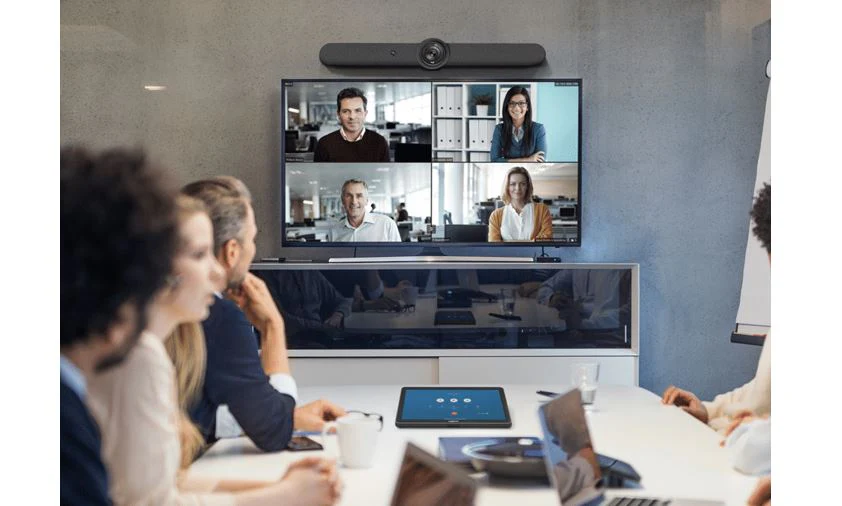The Future of Work: Leveraging Video Conferencing for Seamless Communication
- By -Mash
- Posted on
- Posted in Telecommunications
The future of work is rapidly evolving, with video conferencing emerging as a key tool for ensuring seamless communication in remote and hybrid work environments. As organizations adapt to the changing landscape, video conferencing is becoming an essential part of daily operations, enabling teams to stay connected, productive, and engaged regardless of their physical location. This article explores how video conferencing is shaping the future of work and the benefits it offers to modern workplaces.

The Evolution of the Workplace
Over the past few years, the concept of the traditional workplace has undergone a significant transformation. The rise of remote work, driven by technological advancements and global events, has changed how organizations operate. Video conferencing has played a pivotal role in this shift, providing a platform that allows teams to communicate and collaborate as effectively as they would in a physical office.
Moreover, video conferencing technology has evolved to offer a wide range of features that enhance the virtual work experience. From high-definition video and audio to interactive tools like virtual whiteboards and breakout rooms, these platforms are designed to replicate the in-person meeting experience as closely as possible. As a result, organizations can maintain strong communication channels, ensuring that remote and hybrid teams work together seamlessly.
Enhancing Collaboration and Productivity
One of the primary benefits of video conferencing is its ability to enhance collaboration among team members. In remote work settings, where employees may feel isolated or disconnected, video conferencing provides a sense of presence and connection that is crucial for effective teamwork. By enabling face-to-face interactions, video conferencing helps build rapport and trust among team members, leading to more cohesive and productive teams.
Additionally, video conferencing platforms often come equipped with collaboration tools that facilitate real-time teamwork. For example, screen sharing allows team members to present documents, slides, or software applications to the entire group, ensuring that everyone is on the same page. Furthermore, features like chat functions and file sharing enable teams to communicate and collaborate efficiently, reducing the need for lengthy email chains or multiple platforms.
Flexibility and Accessibility in the Modern Workplace
As organizations continue to embrace remote and hybrid work models, flexibility has become a key consideration. Video conferencing solutions offer the flexibility needed to accommodate diverse work arrangements, allowing employees to connect from anywhere at any time. This flexibility is particularly important for global teams, where members may be spread across different time zones.
Furthermore, video conferencing platforms are accessible from a variety of devices, including desktops, laptops, tablets, and smartphones. This accessibility ensures that team members can join meetings regardless of their location or device, making it easier for organizations to maintain consistent communication and collaboration.
Reducing Operational Costs
In addition to enhancing collaboration and flexibility, video conferencing also offers significant cost-saving benefits. Traditional business travel, which can be expensive and time-consuming, can be greatly reduced with the use of video conferencing. Instead of incurring costs for flights, hotels, and other travel-related expenses, organizations can conduct meetings virtually, leading to substantial savings.
Moreover, video conferencing platforms typically offer scalable pricing models, allowing organizations to choose a solution that fits their budget. Whether it’s a small business looking for a basic video conferencing tool or a large enterprise requiring advanced features, there are options available to meet different needs.
Preparing for the Future of Work
As we look to the future, it’s clear that video conferencing will continue to play a crucial role in how we work. The ongoing development of new technologies, such as artificial intelligence and virtual reality, will likely further enhance video conferencing platforms, making them even more powerful and user-friendly. Organizations that leverage these tools effectively will be better positioned to navigate the challenges of remote and hybrid work, ensuring that their teams remain connected, productive, and engaged.
Conclusion
In conclusion, video conferencing is an indispensable tool for the future of work, offering seamless communication, enhanced collaboration, and cost-saving benefits. As organizations continue to adapt to new work models, embracing video conferencing technology will be key to maintaining strong communication channels and ensuring long-term success in the evolving workplace.



